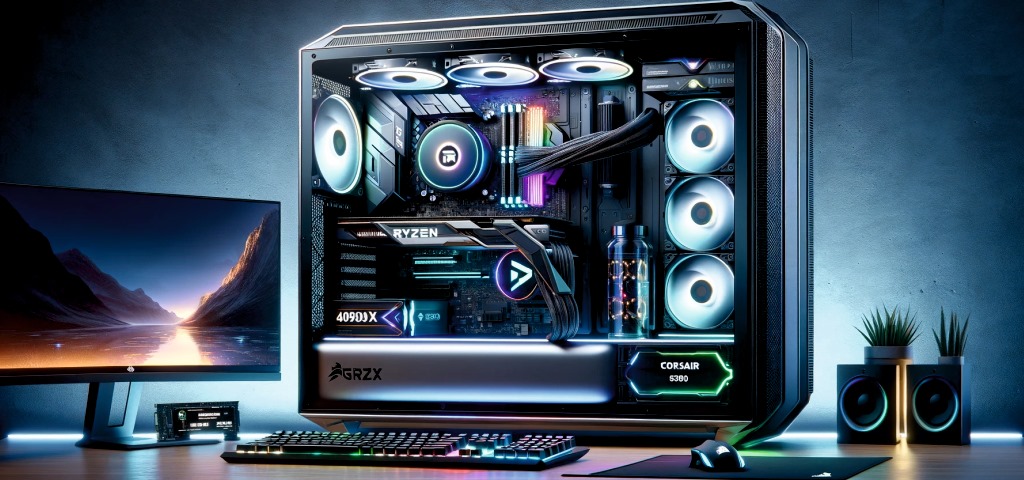Essential Computer Components for a High-Performance PC Build
Building a high-performance PC can be an exciting yet daunting task. Whether you’re a gamer, a content creator, or someone who requires a powerful workstation for intensive tasks, selecting the right components is crucial. Here’s a guide to the essential computer components you need for a high-performance PC build.
1. Central Processing Unit (CPU)
The CPU, or processor, is often referred to as the brain of the computer. It executes instructions and performs calculations that drive all other components. For a high-performance build, consider a multi-core processor from reputable brands like Intel or AMD. Look for models that offer higher clock speeds and better thermal management to ensure smooth operation during demanding tasks.
Key Considerations:
- Core Count: Aim for at least a quad-core processor for multitasking and gaming.
- Clock Speed: A higher clock speed (measured in GHz) usually indicates better performance.
- Compatibility: Ensure the CPU is compatible with your motherboard.
2. Graphics Processing Unit (GPU)
The GPU is essential for rendering graphics, especially for gaming and graphic-intensive applications. A powerful graphics card enhances performance and visual quality, allowing you to play games at higher resolutions and settings. Brands like NVIDIA and AMD offer a range of GPUs to fit different budgets and performance needs.
Key Considerations:
- VRAM: Look for a card with ample VRAM (at least 6GB for gaming) to handle high-resolution textures.
- Ray Tracing Support: If you want to experience the latest in gaming graphics, consider a card with ray tracing capabilities.
- Cooling: A well-cooled GPU can help maintain performance under heavy loads.
3. Motherboard
The motherboard serves as the backbone of your PC, connecting all components together. It determines compatibility with the CPU, GPU, and other peripherals. When choosing a motherboard, look for one that offers enough ports, slots, and features to support your needs.
Key Considerations:
- Socket Type: Ensure the motherboard socket matches your CPU.
- Expansion Slots: Look for enough PCIe slots for additional GPUs or expansion cards.
- Features: Consider built-in Wi-Fi, Bluetooth, and the number of USB ports.
4. Random Access Memory (RAM)
RAM is crucial for multitasking and overall system performance. The more RAM you have, the better your computer can handle multiple applications simultaneously. For a high-performance build, 16GB is often considered the minimum, while 32GB or more is recommended for gaming and content creation.
Key Considerations:
- Speed: Look for RAM with higher speeds (measured in MHz) for better performance.
- Dual-Channel Configuration: Using two RAM sticks in a dual-channel setup can improve performance.
- Type: DDR4 is the current standard, but DDR5 is emerging and offers improved speeds.
5. Storage Solutions
Choosing the right storage solution is critical for both speed and capacity. A combination of SSD (Solid State Drive) and HDD (Hard Disk Drive) is often ideal. SSDs provide faster boot times and load times for applications, while HDDs offer larger storage capacity at a lower cost.
Key Considerations:
- SSD Capacity: Consider at least a 500GB SSD for your operating system and frequently used applications.
- HDD Capacity: Use a larger HDD (1TB or more) for additional storage of files and games.
- NVMe vs. SATA: NVMe SSDs offer faster speeds than SATA SSDs, making them preferable for high-performance builds.
6. Power Supply Unit (PSU)
A reliable power supply is essential to ensure that all your components receive adequate power. A good PSU will not only provide the necessary wattage but also ensure stable power delivery.
Key Considerations:
- Wattage: Calculate your total system wattage needs and choose a PSU that can comfortably support it (usually 80+ rated).
- Efficiency Rating: Look for a PSU with a high efficiency rating (like 80 PLUS Gold) for better performance and lower energy consumption.
- Modular Design: Modular PSUs allow for cleaner cable management and better airflow.
7. Cooling System
Keeping your components cool is vital for performance and longevity. Depending on your CPU and GPU, you may need either air or liquid cooling solutions. High-performance builds often benefit from aftermarket coolers that provide better cooling than stock solutions.
Key Considerations:
- Air Coolers: Large heatsinks with fans can be effective and quieter.
- Liquid Coolers: All-in-one liquid coolers provide excellent cooling and can be visually appealing.
- Case Fans: Ensure your case has adequate airflow to keep temperatures down.
Conclusion
Building a high-performance PC requires careful consideration of each component. From the CPU and GPU to the motherboard and cooling systems, each part plays a critical role in ensuring optimal performance. By choosing the right components based on your needs and preferences, you’ll create a powerful machine that can handle anything you throw at it, whether it’s gaming, video editing, or running complex software. Happy building!

